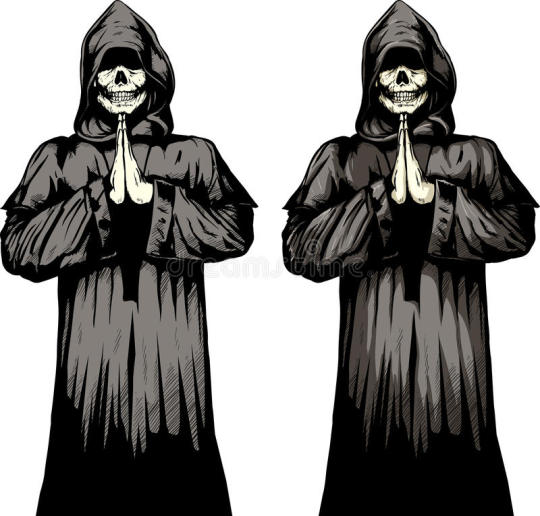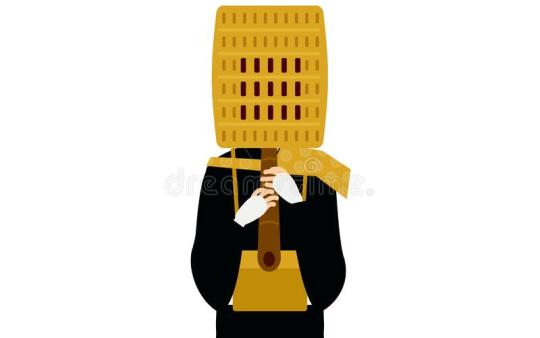#komusō
Explore tagged Tumblr posts
Text

野襤褸菊[Noborogiku] Senecio vulgaris
襤褸[Boro] is derived from the word ぼろぼろ[Boroboro], which describes something that becomes old and brittle and falls apart. They are still used today. For example, ぼろ, ぼろぼろ, おんぼろ[Onboro], ぼろくそ[Borokuso], etc. mean inferior quality. Often written in katakana.
Every winter since long ago, a flea market called ボロ市[Boro-ichi] is held for several days in Setagaya, Tokyo. It was so named because there was a time when old clothes and farm tools were sold in its history. These days, it is crowded with miscellaneous items for sale. https://www.timeout.com/tokyo/shopping/setagaya-boroichi-market
The etymology seems to differ, though, there is an adjective ぼろい, which is used in the sense of extreme degree. For example, ぼろい話[Boroi-hanashi](Sweet deal), ぼろ儲け[-mouke](Easy money), ぼろ負け[-make](Lose badly), and so on.
In addition, there is a word with the same pronunciation but different meaning. It is written in kanji as 梵論|暮露[Boro], and means monks with a slightly special history. In later times, during the Edo period(1603-1868), they were called 虚無僧[Komusō], so this one is better known. https://en.wikipedia.org/wiki/Komusō
Noborogiku in the photo is in bloom in this state, as is 紅花襤褸菊[Benibanaborogiku](Crassocephalum crepidioide). The two belong to the same family, Asteraceae, but are in different genera. https://www.youtube.com/watch?v=DNXaJkGu1qI
5 notes
·
View notes
Text
been on repeat a lot this year, such a great song from an underrated band on a great split with another great band
9 notes
·
View notes
Text

DnD Classes Shiba Edition: The Monk ———— Hey ho folks :3 ! It’s Saturday and weekend! I hope you have a good day and cool plans :3. Well it seems, I have another artwork for you this week and I picked up another entry for my DnD class project. This time I did a #shiba and a monk :D. For the design, I didn’t want to go with the typical Shaolin style monk and went for a Komusō style approach. Mainly because, I find the design interesting and it would fit the best with the Japanese style theme, that I planned with the Shiba. I think my favourite part is the design itself. I don’t know why, but not seeing the #shibas face, makes it more intriguing… Anyway, which class should I do next? Should I do another shiba or a dragon? Let me know, down in the comments!
#fantasyart#digitalartwork#procreateartwork#DnD#shiba#shibainu#doggo#dog#monk#komuso#dungeonanddragons#dndclasses#fantasy#fantasycharacter#procreate#digitalart#characterdesign#cute#ttrpg#ttrpgclasses#torigate#puppy#monks#dnd
4 notes
·
View notes
Text


Rikan / 3.2023
Memorial Portrait of Arashi Kichisaburō I as Mashiba Hisayoshi, 1821, by Shunkōsai Hokushū (Japanese, active 1810–1832) (Philadelphia Museum of Art: Purchased with the Lola Downin Peck Fund and with funds contributed by various donors, 1969-208-199); Arashi Kitsusaburō I as Nagai Genzburō, Disguised as a Komusō (Traveling Mendicant Priest), 1821, by Ganjōsai Kunihiro (Japanese, active around 1815–1843) (Philadelphia Museum of Art: Purchased with the Lola Downin Peck Fund and with funds contributed by various donors, 1969-208-219)
6 notes
·
View notes
Text

@cicadahead yep there's a komusō monk in ōkami as a very minor character, and I figured I'd draw him in light of the announcement; they're so cool in general

komuso, the monk digital / photoshop 2024
81 notes
·
View notes
Text
The Fuke sect has never been officially acknowledged. Only the komusō were formally acknowledged by the authorities in 1677, but this was withdrawn in 1871.
Source: Wikipedia
0 notes
Photo

Komusō con shakuhachi
121 notes
·
View notes
Text
monk by another name
Personally, I don’t put too much weight into Law’s attachment to faith from Flevance although the imagery hits hard (and I appreciate the art).
But, and I’ve written it before (Flevance and Wano pics in that post), I do find it interesting that his disguise in Wano is of a komusō Buhddist monk (belonging to the Fuke school of Zen Buddhism), and so again he gets linked with religion, though not on a personal level (that we know of). That particular order suits him though.

As also said in the past, it ties into his SBS stated hobby of wandering, and also ties into the tradition/history of many ronin becoming komusō and the monks themselves often being warrior monks, and both rebels and government spies infiltrating the orders. The government wiped them out too, although the music they wrote remains. Wiki says:
komusō temples and their monks were abolished in 1871

I’m not sure what abolishing a monk entails. I know the order (or outfit) is a staple of Japanese storytelling—whether in anime or historical drama—but yeah, if the spiritual path is being focused on, there is cosmetic and maybe deeper development (since in either case, from Law himself, we’ve only got the cosmetic, but it’s plenty of material for fanfic and fanarts, which is great).
Samurai were the ones most often trained in the shakuhachi, btw.


Also, I like this post and episode for its focus on Law’s tengai and outfit, Especially the shakuhachi played in the background like the amazing pan flute (I think) in the opening of Sergio Leone’s The Good, The Bad and The Ugly, which was a remake of Kurosawa’s film Yojimbo.
Gonna have to hunt down the Kurosawa film and see if the shakuhachi is used at that entrance point (some posts say it’s a cliched Hollywood way of interpreting Japanese film). Getting sidetracked now. That whole filmic section is just one of favourite anime moments. Sorely underrated. Ha-ha. Although meta wrapped in a meta wrapped in a homage wrapped in a meta.
#one piece#trafalgar law#flevance#trafalgaar law's faith#komuso#komusō#one piece meta#opmeta#op meta#trafalgar d. water law#chromameta#chromalami#tengai#law's faith
19 notes
·
View notes
Text
His name is Rioto ! He usually covers his face with a straw basket hat, inspired by Komusō monks. The white markings on his temples are in reference to Saiken's eye stalks. His flute dispenses bubbles like Saiken's canon jinchuriki Utakata

wip for my saiken/6 tails jinchuriki oc. No name yet but hes a wandering nin from the hidden rain
4 notes
·
View notes
Photo

In this image from 1887, three Komusō monks stand near a fence in Japan. Komusō monks were mendicants from the Fuke school of Zen Buddhism. By wearing wooden baskets on their heads members of the Fuke sect demonstrated the absence of specific ego. The Fuke school flourished during the Edo period of 1600–1868, but soon thereafter the Japanese government abolished it.
72 notes
·
View notes
Photo

虚無僧 priest of nothingness
#art#collage#zen#こむそう#monk#shakuhachi#komusō#mixed media#design#ocean#void#opening#nothingness#not two#retrofuture#green
160 notes
·
View notes
Photo

京都明暗教會虛無僧,台北
1933
#taipei#taiwan#formosa#明暗教会#虚無僧#taihoku#台北#台湾#台灣#newman traveltalks#1933#temple#temple blower#komusō#Komuso
568 notes
·
View notes
Photo

Un #komusō, monje de la nada o del vacío era un monje mendicante de la secta #Fuke del budismo #zen. Por lo general se les caracteriza por utilizar una canasta de paja en la cabeza como una manifestación de la ausencia de ego y tocando la #shakuhachi (una flauta japonesa) utilizada para meditar. Los #komusō practicaban el #suizen, un tipo de meditación en la que solo tocaban piezas en el shakuhachi llamadas #honkyoku. Debido a su vestimenta, los ninja se disfrazaban de komusō para pasar inadvertidos. (fuente: wikipedia) Los komuso recibían al ordenarse tres herramientas: la flauta, el sombrero de paja y el mantón (similar al de otras sectas budistas) El cesto cubría completamente el rostro de forma aparatosa, pero permitiendo la interpretación del instrumento. También recibían una pequeña caja de madera lacada que colgaban del cuello para portar los documentos que les permitían atravesar las fronteras. https://www.instagram.com/p/CRRLNtasWNc/?utm_medium=tumblr
1 note
·
View note
Photo

#samurai#ronin#komusō#monk#warrior#wanderer#japan#japanese#art#artist#beat#beat generation#new beat#next beat#neo beat#beatnik#neo beatnik
12 notes
·
View notes
Text
Fuke monastics or komusō were noted for playing the shakuhachi as a form of meditation known as suizen ("blowing meditation"), an innovation from the earlier zazen ("sitting meditation") of other Zen sects. Fuke Zen was characterized in the public imagination of Japan by monks playing the shakuhachi flute while wearing a large woven basket hat or tengai (天蓋) that covered their entire head as they went on pilgrimage.

Source: Wikipedia
0 notes